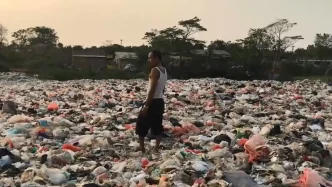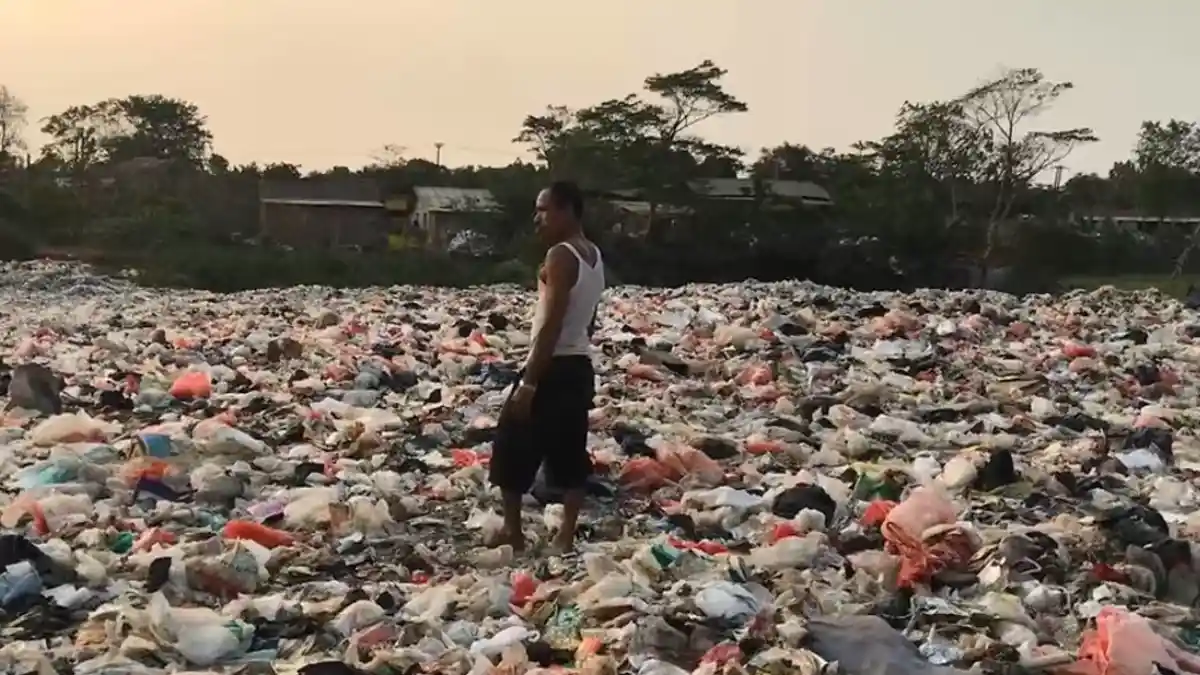Indonesia, the world’s fourth most populous nation, is grappling with a mounting waste crisis that threatens both its environment and public health. With a waste management rate languishing at just 10 percent, as revealed by recent government inspections, the country’s 550 landfills are projected to reach full capacity by 2030. As millions of tonnes of unmanaged waste—much of it plastic—pollute rivers, water sources, and even human bodies, urgent calls for systemic reform are growing louder.
A Grim Reality of Waste Mismanagement
The scale of Indonesia’s waste problem is staggering. The country generates 56.6 million tonnes of waste annually, according to Environment Minister Hanif Faisol Nurofiq. Of this, nearly 20 percent—about 10.8 million tonnes—is plastic, a material notoriously difficult to manage due to its non-biodegradable nature. Yet, the national recycling rate stands at a mere 22 percent, with regional disparities starkly evident: Java Island leads at 31 percent, while Sumatra trails at just 12 percent.
Compounding the issue is the reliance on outdated waste disposal methods. Most landfills in Indonesia operate under an open dumping system, a practice that not only fails to contain waste but also contributes significantly to greenhouse gas emissions. Deputy Environment Minister Diaz Hendropriyono recently highlighted the severity of the situation, noting that open dumping releases methane, a gas that traps up to 34 times more heat than carbon dioxide over a century. “The impact is far-reaching. We have found microplastics in rivers, water sources, placentas, and even breast milk” he said, as reported by Antaranews.
Policy Targets and Missed Opportunities
In 2017, then-President Joko Widodo, widely known as Jokowi, set an ambitious goal for Indonesia to achieve 100 percent waste management by the end of 2025. The plan mandated that 70 percent of waste be properly managed through sorting, collection, and conversion into raw materials or energy, while the remaining 30 percent was to be reduced through recycling. However, progress has fallen far short of expectations. Data from the National Waste Management Information System (SIPSN) showed that only 60.2 percent of waste was managed in 2023, a figure that plummeted to 39 percent after a policy recalibration excluded unmanaged landfills from official statistics.
More alarmingly, inspections of 343 landfills conducted this year revealed an even bleaker picture: the actual waste management rate at these sites is just 9 to 10 percent. “This figure was calculated by evaluating the availability and capacity of recycling and recovery facilities at each landfill, as well as how effectively they were utilized” Hanif explained. Recognizing the scale of the challenge, President Prabowo Subianto recently issued a new regulation extending the 100 percent waste management target to 2029, buying time for a nation on the brink of environmental collapse.
Public Practices and Health Risks
Beyond the failures at the institutional level, public behavior exacerbates Indonesia’s waste crisis. A lack of accessible waste disposal and management facilities has led many households to resort to open burning, a practice prohibited due to its severe environmental and health consequences. A report from the World Risk Poll, published by Lloyd’s Register Foundation in September 2024, found that 48 percent of Indonesian households burn their waste. This releases black carbon—a key contributor to global warming—and so-called “forever chemicals” that can travel long distances and harm human health.
In cities like Surabaya, Indonesia’s second-largest urban center, grassroots efforts offer a glimmer of hope. On June 17, 2025, workers were seen sorting plastic waste at a depot, part of a network of 660 waste banks across the city. These community-driven initiatives aim to encourage recycling by allowing residents to exchange waste for small financial rewards. However, such efforts remain localized and insufficient to address the national crisis without broader systemic support.
Environmental and Economic Stakes
The environmental fallout from Indonesia’s waste mismanagement is already evident. Rivers and water sources are choked with plastic, while microplastics have infiltrated the food chain, posing risks to both ecosystems and human health. Economically, the crisis threatens industries reliant on clean environments, such as tourism and fishing, which are vital to millions of Indonesians. Bali, for instance, a global tourism hotspot with a recycling rate of 22.5 percent alongside Nusa Tenggara, still struggles with visible pollution on its beaches, a reminder of the national challenge.
Moreover, the projected exhaustion of landfill capacity by 2030 carries significant economic costs. Developing new waste management infrastructure, transitioning to sustainable practices, and mitigating environmental damage will require substantial investment. While exact figures are unavailable, the cost of inaction could far outweigh the price of reform, especially as Indonesia seeks to position itself as a leader in Southeast Asia’s green economy.
Global Context and Regional Disparities
Indonesia’s waste crisis is not unique but reflects a broader challenge across developing nations where rapid urbanization and population growth outpace infrastructure development. In comparison, neighboring Malaysia has achieved a recycling rate of approximately 33 percent, though it too faces landfill capacity issues. Singapore, with its advanced waste-to-energy systems, stands as a regional outlier, managing nearly 60 percent of its waste sustainably. For Indonesia, adopting such technologies could offer a path forward, though the financial and logistical barriers are formidable.
Within Indonesia, regional disparities highlight the uneven distribution of resources and awareness. Java, home to the capital Jakarta and over half of the country’s population, benefits from better infrastructure and achieves a recycling rate of 31 percent. In contrast, Sumatra’s rate of 12 percent reflects the challenges faced by less urbanized regions with limited access to waste management facilities. Bridging this gap will require targeted policies and investments tailored to local needs.
Pathways to Reform
Addressing Indonesia’s waste crisis demands a multi-pronged approach. First, the government must prioritize investment in modern waste management infrastructure, phasing out open dumping in favor of recycling and waste-to-energy systems. Incentives for private sector involvement could accelerate this transition, as businesses have the capital and expertise to innovate in waste processing.
Second, public education campaigns are critical to changing behaviors around waste disposal. Reducing the prevalence of open burning and increasing household recycling rates will require sustained efforts to raise awareness and provide accessible facilities. Community initiatives like Surabaya’s waste banks could serve as a model, scaled up with government backing to reach rural and underserved areas.
Finally, stricter enforcement of existing regulations, coupled with policies to reduce plastic production and consumption, could curb the influx of waste. Indonesia’s significant plastic pollution—10.8 million tonnes annually—underscores the need for measures like bans on single-use plastics, already implemented with varying success in cities like Bali and Jakarta.
Looking Ahead: A Critical Juncture
As Indonesia races against the 2030 deadline for landfill capacity, the stakes could not be higher. With microplastics permeating every corner of life and methane emissions fueling climate change, the country stands at a critical juncture. The extension of the waste management target to 2029 offers breathing room, but without decisive action, it risks becoming another missed milestone. For now, the question looms: can the government, businesses, and public unite to avert an environmental disaster, or will Indonesia’s waste crisis become a cautionary tale for the region?
















